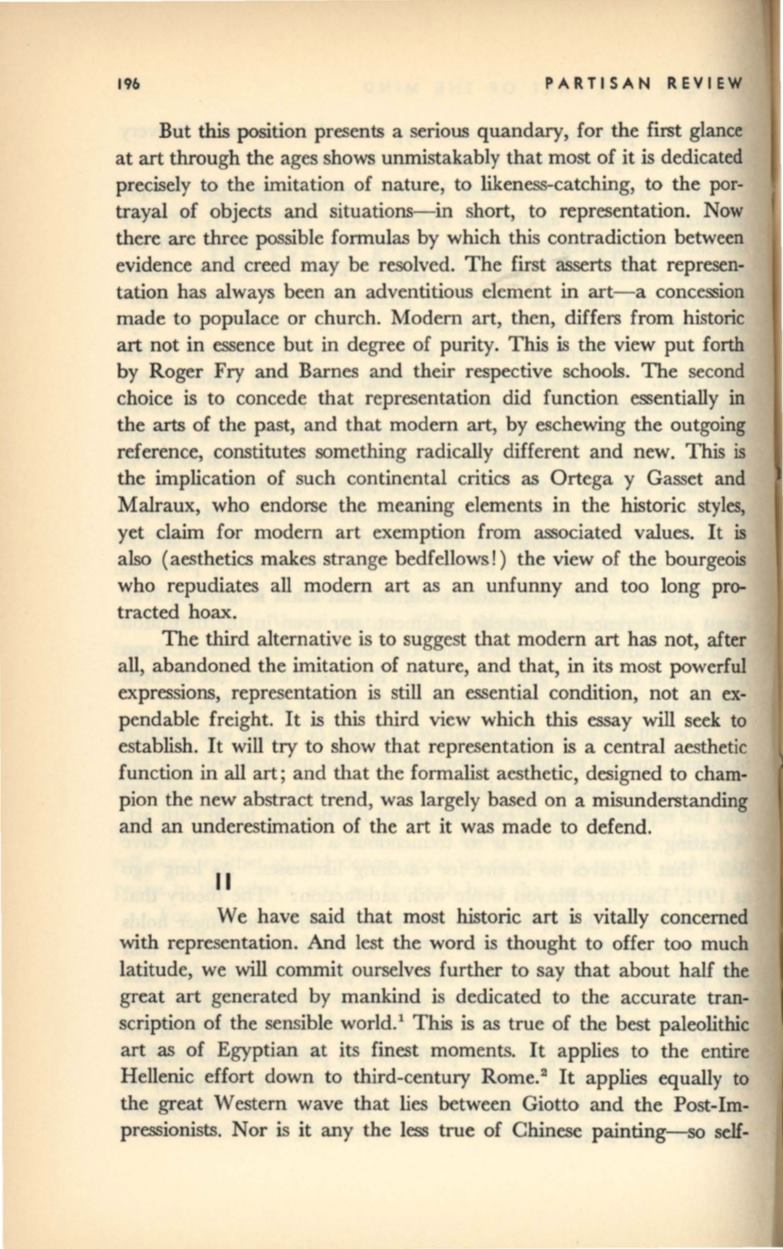
196
PARTISAN REVIEW
But
this
position presents a serious quandary, for the first glance
at
art
through the ages shows unmistakably that most of it is dedicated
precisely to the imitation of nature, to likeness-catching, to the por–
trayal of objects and situations-in short, to representation. Now
there are three possible formulas by which this contradiction between
evidence and creed may be resolved. The first asserts that represen–
tation has always been an adventitious element in art- a concession
made to populace or church. Modem art, then, differs from historic
art not in essence but in degree of purity. This is the view put forth
by Roger Fry and Barnes and their respective schools. The second
choice is to concede that representation did function essentially in
the
arts
of the past, and that modem
art,
by eschewing the outgoing
reference, constitutes something radically different and new. This is
the implication of such continental critics as Ortega y Gasset and
Malraux, who endorse the meaning elements in the historic styles,
yet claim for modem art exemption from associated values. It is
also (aesthetics makes strange bedfellows!) the view of the bourgeois
who repudiates all modem art as an unfunny and too long pro–
tracted hoax.
The third alternative is to suggest that modern art has not, after
all, abandoned the imitation of nature, and that, in its most powerful
expressions, representation is still an essential condition, not an ex–
pendable freight. It
is
this third view which this essay will seek to
establish.
It
will try to show that representation
is
a central aesthetic
function in all art; and that the formalist aesthetic, designed to cham–
pion the new abstract trend, was largely based on a misunderstanding
and an underestimation of the art it was made to defend.
II
We have said that most historic art is vitally concerned
with representation. And lest the word is thought to offer too much
latitude, we
will
commit ourselves further to say that about half the
great art generated by mankind is dedicated to the accurate tran–
scription of the sensible world.
1
This is as true of the best paleolithic
art as of Egyptian at its finest moments. It applies to the entire
Hellenic effort down to third-century Rome.
a
It applies equally to
the great Western wave that lies between Giotto and the Post-Im–
pressionists. Nor is it any the less true of Chinese painting-so self-


